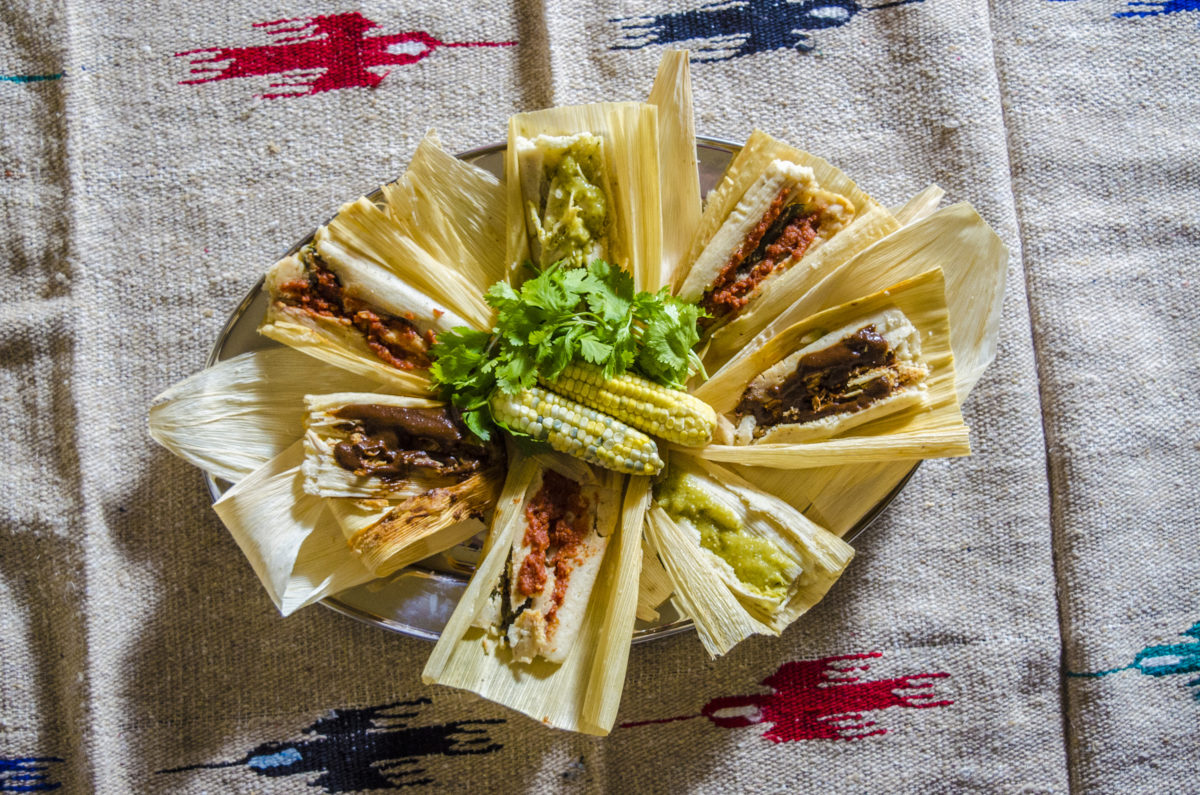
-Tamales (in plural)
-Tamal (in singular)
History of tamales
The word tamal comes from the Náhuatl tamalli that means envuelto (wrapped) – a legacy from the Aztecs and other Mesoamerican cultures to the world. Corn is the main ingredient. This grain is over four thousand years old and it is one of the most representative ingredients in Mexican cuisine.
This pre-hispanic delight has been documented by Fray Bernardino de Sahagún – a missionary priest who participated in the Catholic evangelization of colonial New Spain – as one of the ancient dishes of the Mexican culture, used in ritual activities as an offering for the dead. Many regions of Mexico still use tamales for their funeral rituals such as Día de Muertos (Day of the Dead), or for the independence celebration.
The concept of a tamal comes from the primitive idea of using the hand as a plate to wrap the food. Afterwards, plant leaves found in nature replaced the hand. Because of the abundance of the corn in the central regions and the banana leaves (plantain) in the southern regions, these two leaves became the most popular.
There are over 500 different types of tamales in Mexico. The most popular include: Pork in green chili, chicken in mole negro, red salsa and sweet with raisins.
What is a tamal?

A nixtamalized corn (hominy) masa, mixed with lard or vegetable shortening and rich broth. Nowadays there are many alternatives to replace lard, and we can find tamales for vegetarians and vegans – but the flavor, of course will not be the same.
Tamales from Mexico City are typically wrapped in corn husks and filled with different meats, salsas, vegetables or fruits (for the sweet tamales) before being steamed.
Perfect for celebrations, potlucks, or family gatherings. You can freeze them up to three months. Kids take them to school for lunch, and they are GLUTEN-FREE!
Eat them hot or cold. Unwrap them and they are ready to eat. Easy to take on the go.
There are 4 basic elements in tamales
Nowadays the tamales have many variations and due to the influence of other cuisines and cultures, they come in many different styles. But to be called a genuine tamal, they must have these four elements:
- Wrapped – in corn husks or banana leaves (plantain)
- Masa
- protein filling
- Salsa
Learn to make tamales – Book a class now!

Perhaps you’ve been wanting to learn how to make tamales? You’ll be surprised how easy it is to cook this fabulous recipe. Sign up to one of Cocina Corazon’s tamales workshops. Stay tuned for new classes and reserve your spot as this class is so popular.
Want to host a class in your kitchen? Invite your friends and family and host a class in your own kitchen. Send us a message and let’s cook!

